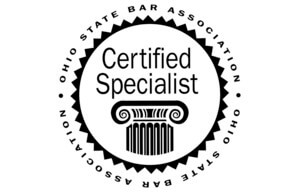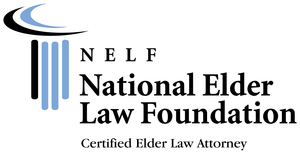The Ohio Legacy Trust
/If you or anyone you know is concerned about the prevalence of lawsuits in today’s society, and would like to explore options to protect your assets under the new Ohio Legacy Trust Act, contact or recommend your loved one to contact our office. We offer FREE twenty minute telephone consultations with an attorney, and free responses to questions submitted by e-mail. Of course, the best means to get answers and professional advice tailored to the specific circumstances and goals of the individual, is to schedule an in-office consultation. Protecting your assets has just become possible in a way NEVER BEFORE POSSIBLE. Taking action now may direct you on the right path to preserving a lifetime of savings, for both you and your heirs. Selecting professionals with extensive experience in asset protection is essential.
The State of Ohio has recently stepped into the forefront of states allowing individuals to create their own trust, be the beneficiary of their trust, and protect their assets from nearly all general future creditors. In the past, one had to create expensive and sometimes risky offshore trusts to accomplish this purpose, or more recently create trusts in a few other states, but like the Alaska version, be required to hold assets in that state.
The Ohio Legacy Trust Act, effective March 27, 2013, allows a person to set up a trust – an Ohio Legacy Trust – which will allow the person to protect his or her assets from future creditor claims, while still maintaining essential control. Under the terms of the Ohio Legacy Trust Act, the Ohio Legacy Trust must be an Irrevocable Trust, meaning that it is in some respects non-changeable once it is established. However, despite this requirement, a trust may be drafted with the person setting up the Trust retaining the following rights and powers, while still qualifying as an Ohio Legacy Trust:
- The right to receive the income from the Legacy Trust;
- The right to use the house, other real estate, or other personal assets (tangible personal property);
- The right to receive or use any assets in the Legacy Trust, so long as it comes about through the Trustee acting within the Trustee’s discretion or pursuant to a standard;
- The right to remove a Trustee and appoint a new one at any time;
- The right to control the investments in the trust;
- The ability to change the beneficiaries of the trust at any time, effective during lifetime or after death, with a few exceptions;
- The power to veto a distribution from the trust;
- The power to provide for the use of trust income or assets to pay income taxes due on the income of the trust;
- The power to provide for the use of trust income or assets to pay all or any part of the debts of the person (who set up the trust) after death, the expenses of administering the estate, or any estate, gift, generation skipping transfer, or inheritance tax;
- The right to provide that some or all of the trust assets will pour back into the estate of the person who set up the trust upon death.
Generally, the Ohio Legacy Trust Act prohibits a creditor from bringing an action of any kind against a qualified Ohio Legacy Trust, against the person who created the trust, the Trustee of the Ohio Legacy Trust, or against any person involved in the counseling in connection with the drafting, administration or funding of the Legacy Trust. In order to maintain such an action, the creditor must seek to void a specific qualified transfer or transfers to the trust (called a “disposition”) on the basis that certain transfer(s) to the Ohio Legacy Trust were made with the “specific intent to defraud the specific creditor bringing the action.” The burden of proof rests with the creditor to demonstrate the matter by clear and convincing evidence.
Moreover, the claim is extinguished unless it is brought within a designated time frame, generally, either eighteen months after a particular transfer is made to the Ohio Legacy Trust (as to each transfer), or for a creditor who became a creditor before the transfer(s) at issue was made, within thirty-six months so long as a claim is filed within six months of when the transfer was or reasonably could have been discovered.
The rules are favorable as to the treatment of the “tracking” of multiple transfers. Essentially, a “last in, first out” rule applies. Accordingly, a distribution from the qualified Ohio Legacy Trust is considered to have been made from or with the money most recently transferred to the Trust, except to the extent proven to the contrary “beyond a reasonable doubt”.
If a claim is brought successfully against an Ohio Legacy Trust, the transfer/disposition to the trust shall be avoided only to the extent necessary to satisfy the particular debt to that creditor who brought the action: all other transfers remain valid and effective. If the court is satisfied that the beneficiary of the Ohio Legacy Trust has not acted in bad faith in receiving a distribution from the Trust, the right of the creditor shall be subject to the right of the beneficiary (including the person who created the trust), to retain that distribution if it was made through the Trustee’s discretion prior to the creditor commencement of the action.
Each transfer/disposition to a qualified Ohio Legacy Trust, an affidavit must be executed, either before or substantially at the same time as the disposition. The affidavit shall be notarized and contain certain statements under oath, including the following:
- The property being transferred to the trust was not derived from unlawful activities;
- The transferor has full right and title to transfer the property;
- The transferor will not be rendered insolvent immediately after the transfer;
- The transferor does not intend to defraud any creditor by reason of the transfer;
- There is no pending or threatened court actions, except as identified;
- The transferor is not involved in any administrative proceedings, except as identified;
- The transferor does not contemplate the filing for relief under the Bankruptcy Code at the time of the transfer.
An affidavit is not required from a transferor who is not a beneficiary of the Ohio Legacy Trust that receives the disposition.
A qualified Ohio Legacy Trust will name at least one qualified trustee, will expressly incorporate the laws of Ohio to govern the Trust, will affirmatively state it is irrevocable, and contain a spendthrift provision that by its terms restrains both the voluntary and involuntary transfer of a transferor’s interest in that trust. A qualified trustee is someone who is not the creator of the trust who, if a natural person, is a resident of the State of Ohio, or if not a natural person, is authorized by one or more of various sources to be a trustee in Ohio.
A transferor’s interest in property that is the subject of a qualified disposition into an Ohio Legacy Trust may be attached in connection with any debt that the transferor owes for payment of child support. This also extends to spousal support, alimony, or in connection with the division of property in favor of the transferor’s spouse or former spouse, but only to the extent the transferor was married to the spouse on or before the particular transfer(s) to the Ohio Legacy Trust at issue was made.
Certain creditors, like the IRS, may be exempt from these protections. Also, if one is concerned about protecting their assets from the devastating cost of long-term care, or otherwise qualifying for benefits such as the VA Aid and Attendance Pension and/or Medicaid, then protection for these purposes will only happen if the trust is specifically drafted to accomplish these purposes. Special account must also be taken to protect these same assets from the creditors of heirs, depending upon their unique circumstances. The rules are complex, and require the experience offered by a Certified Elder Law Attorney to achieve maximum protection through a qualified Ohio Legacy Trust.





